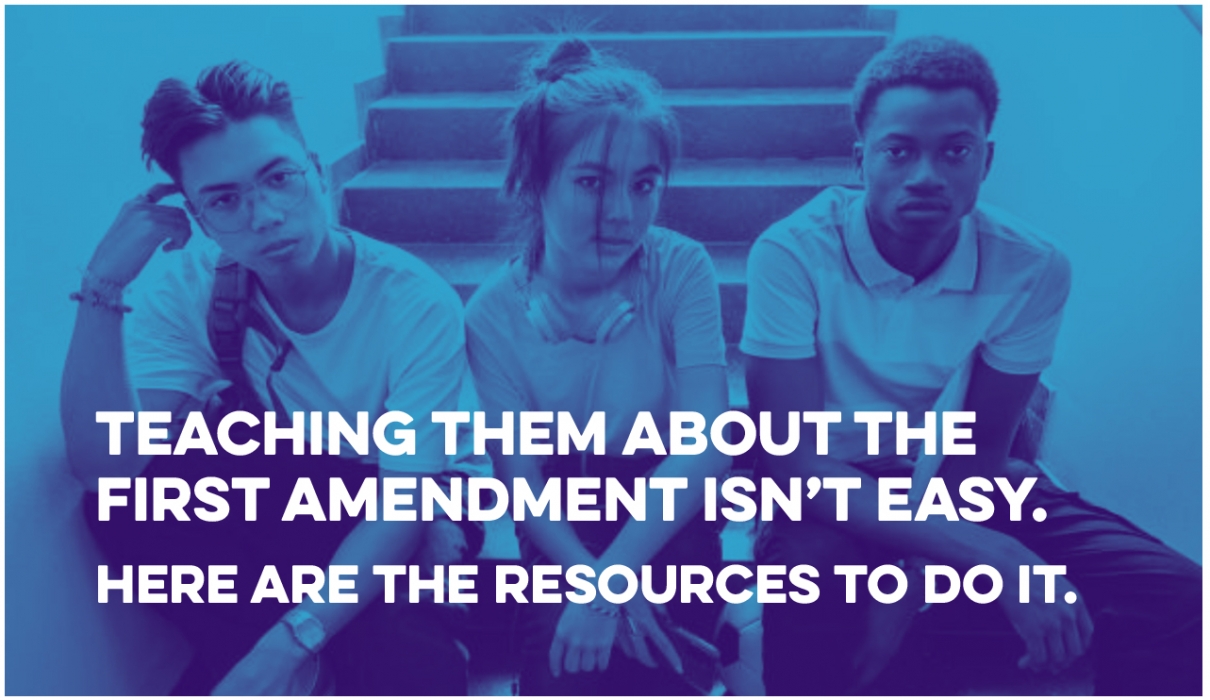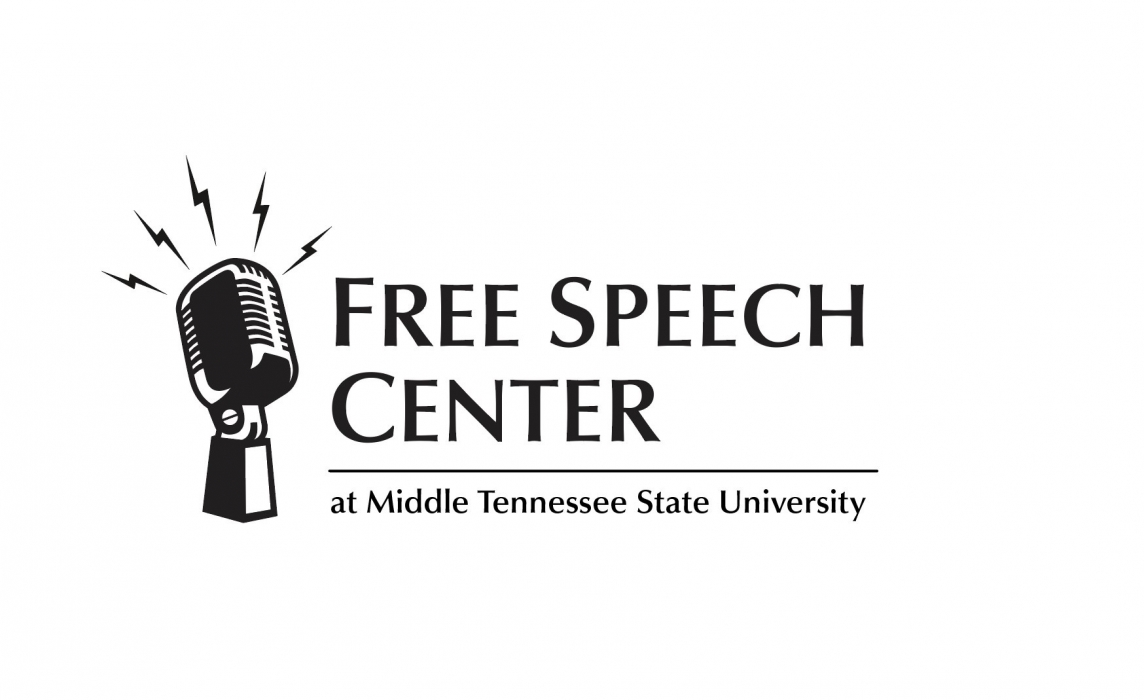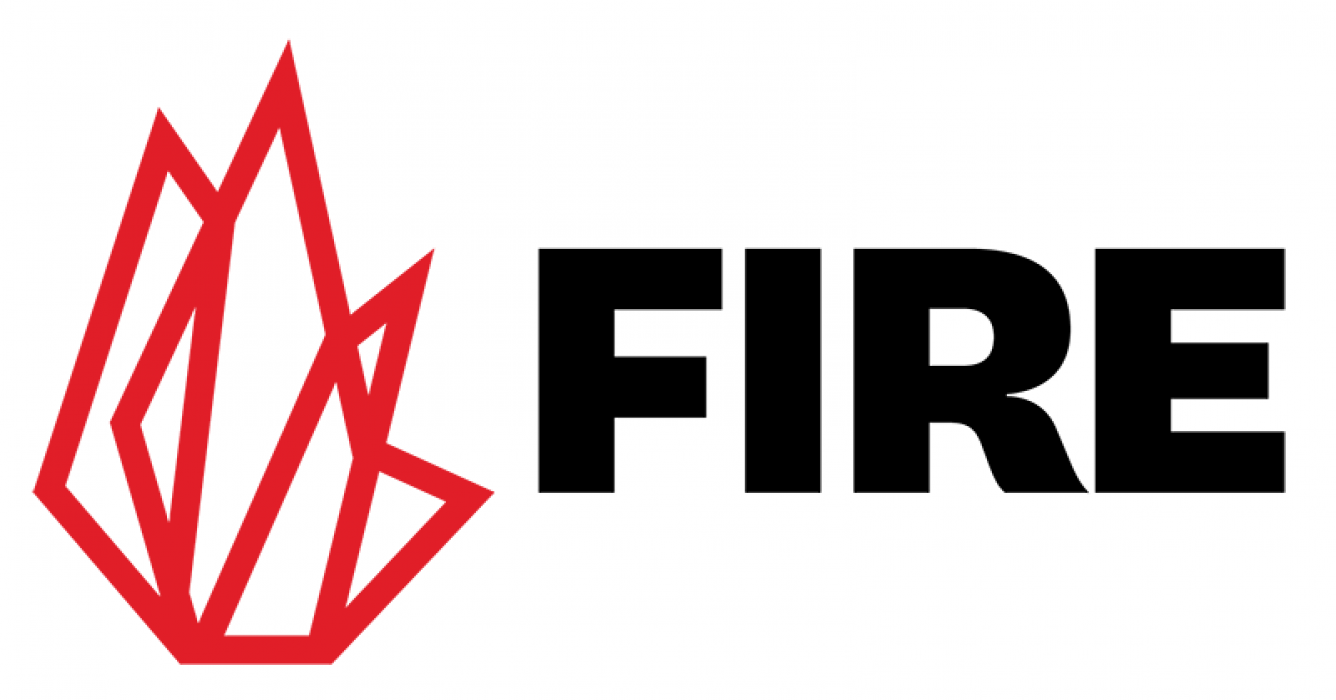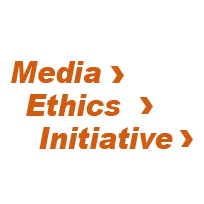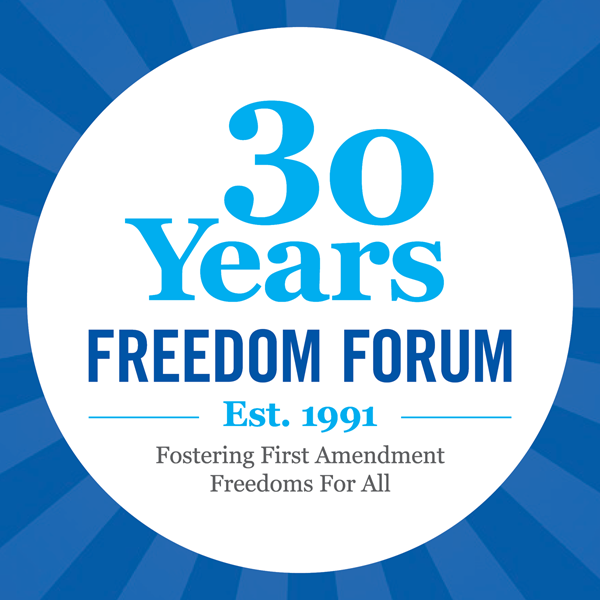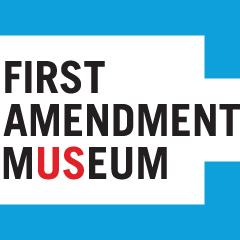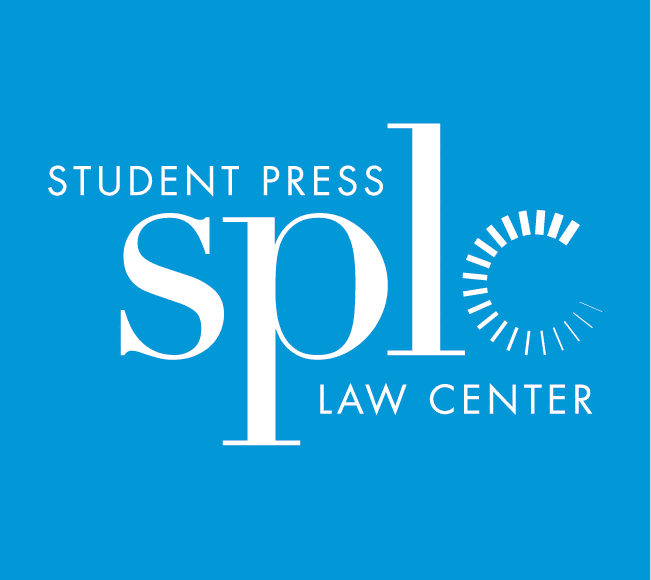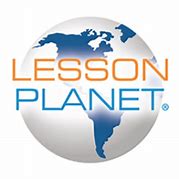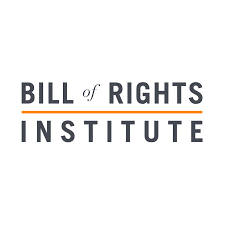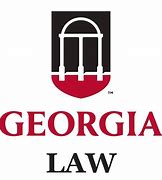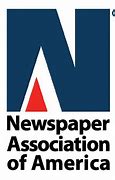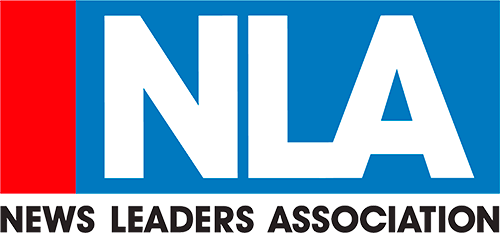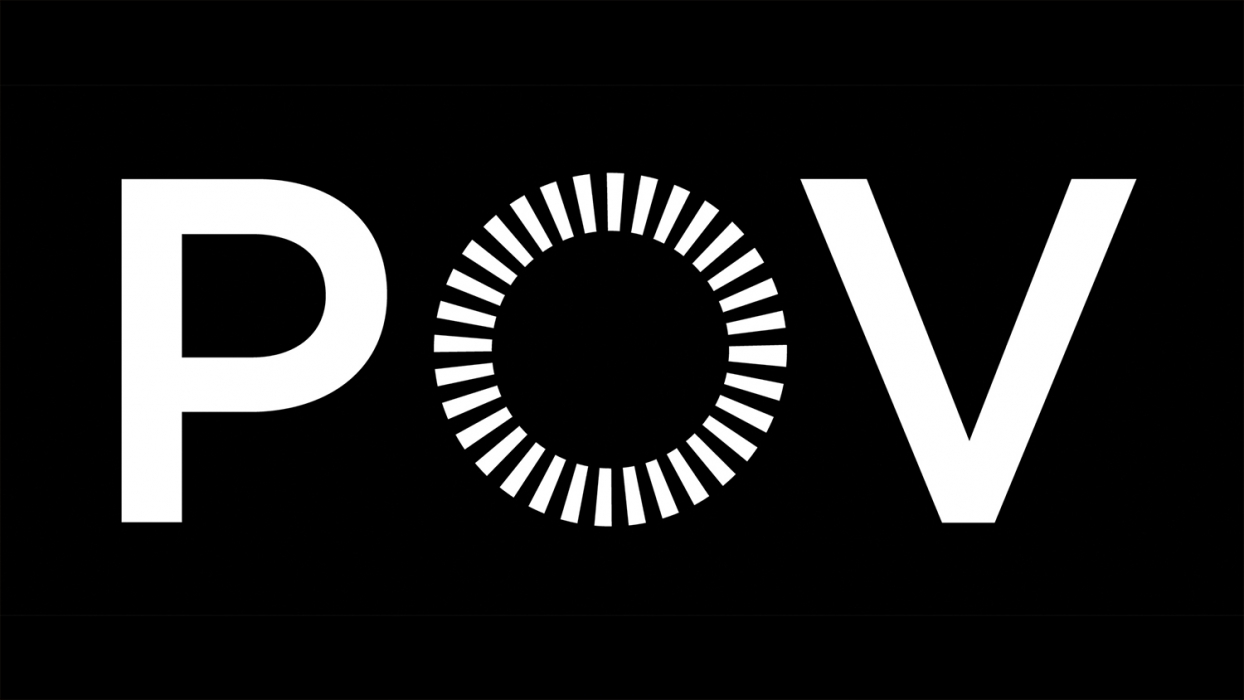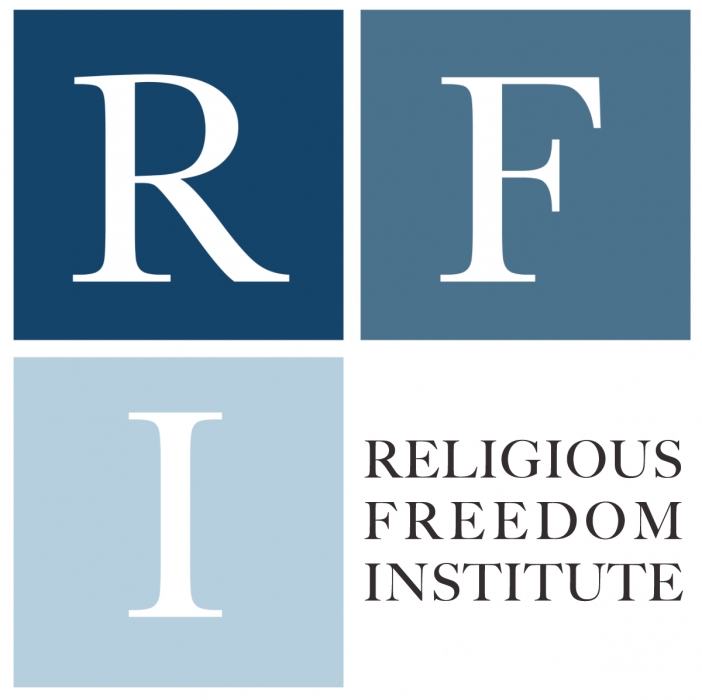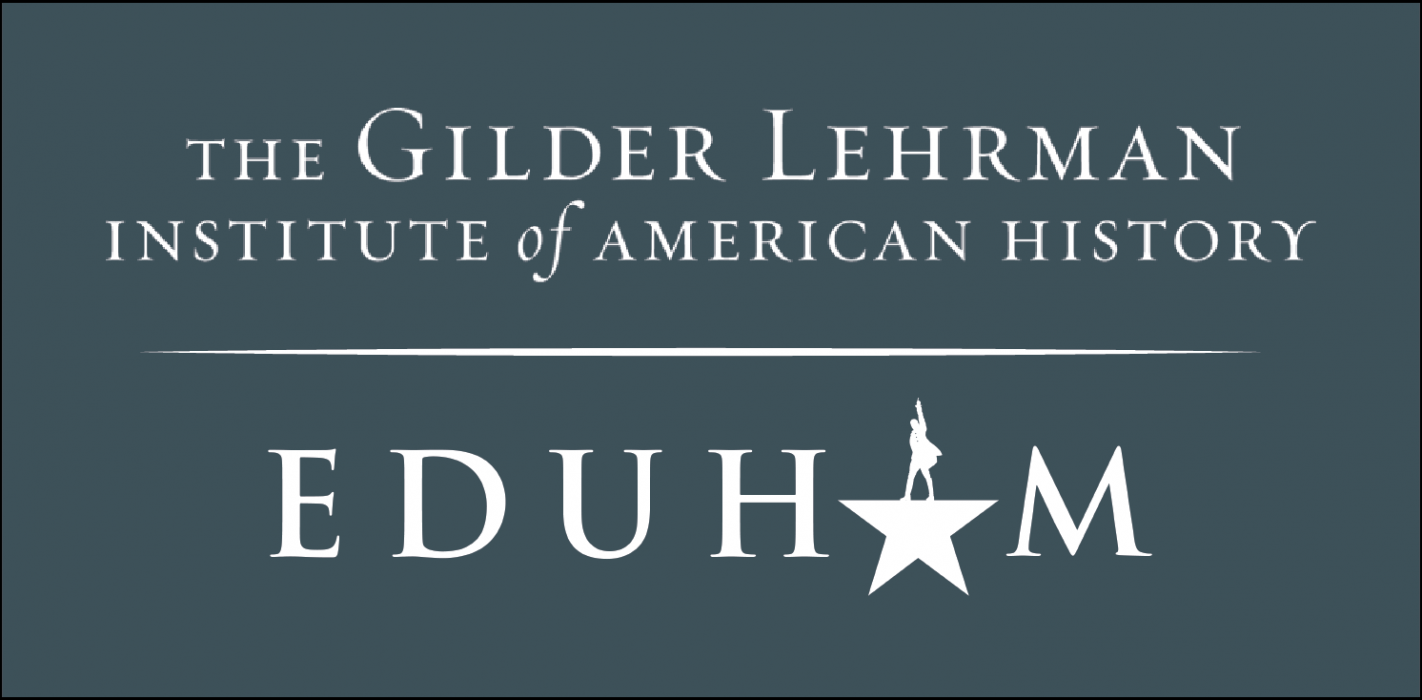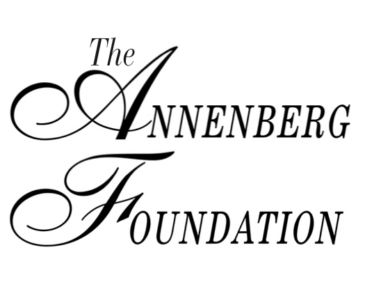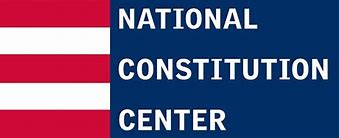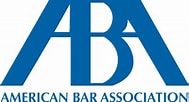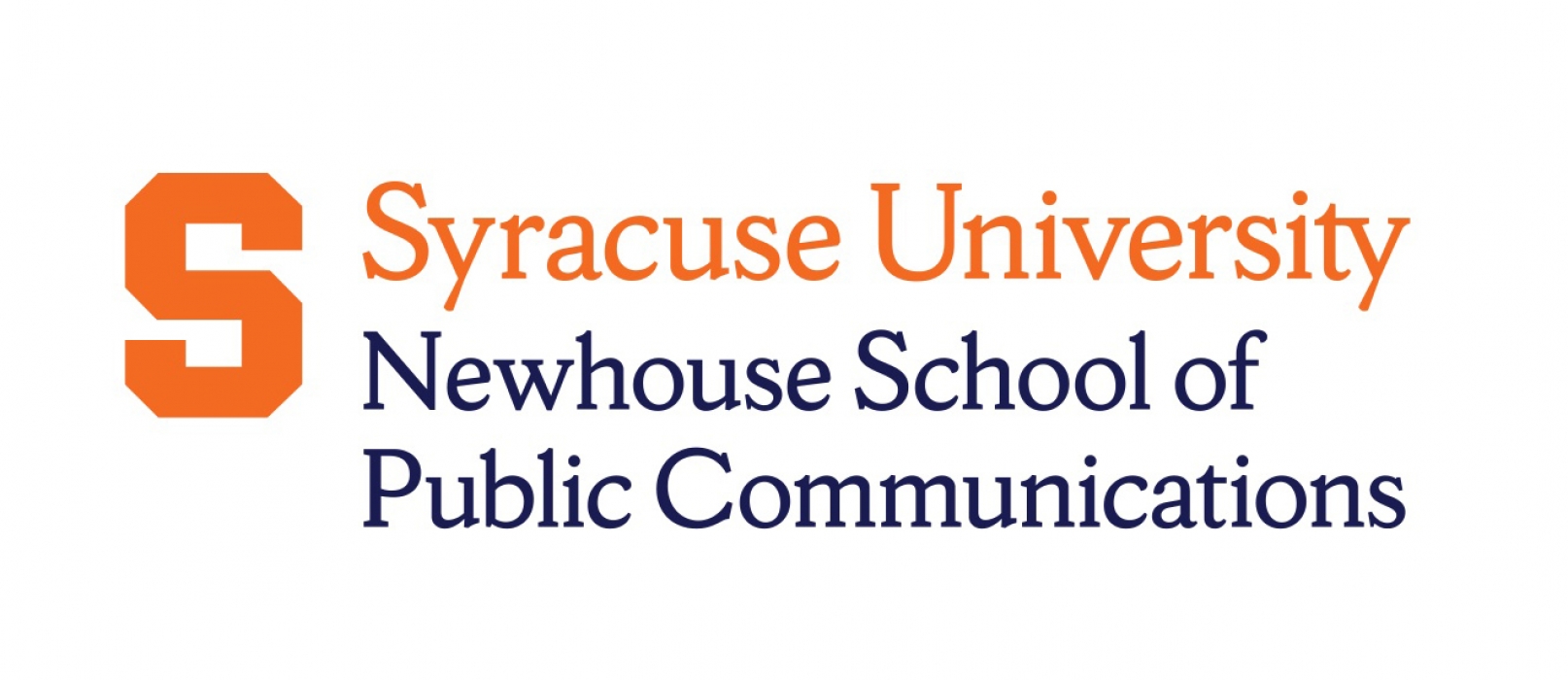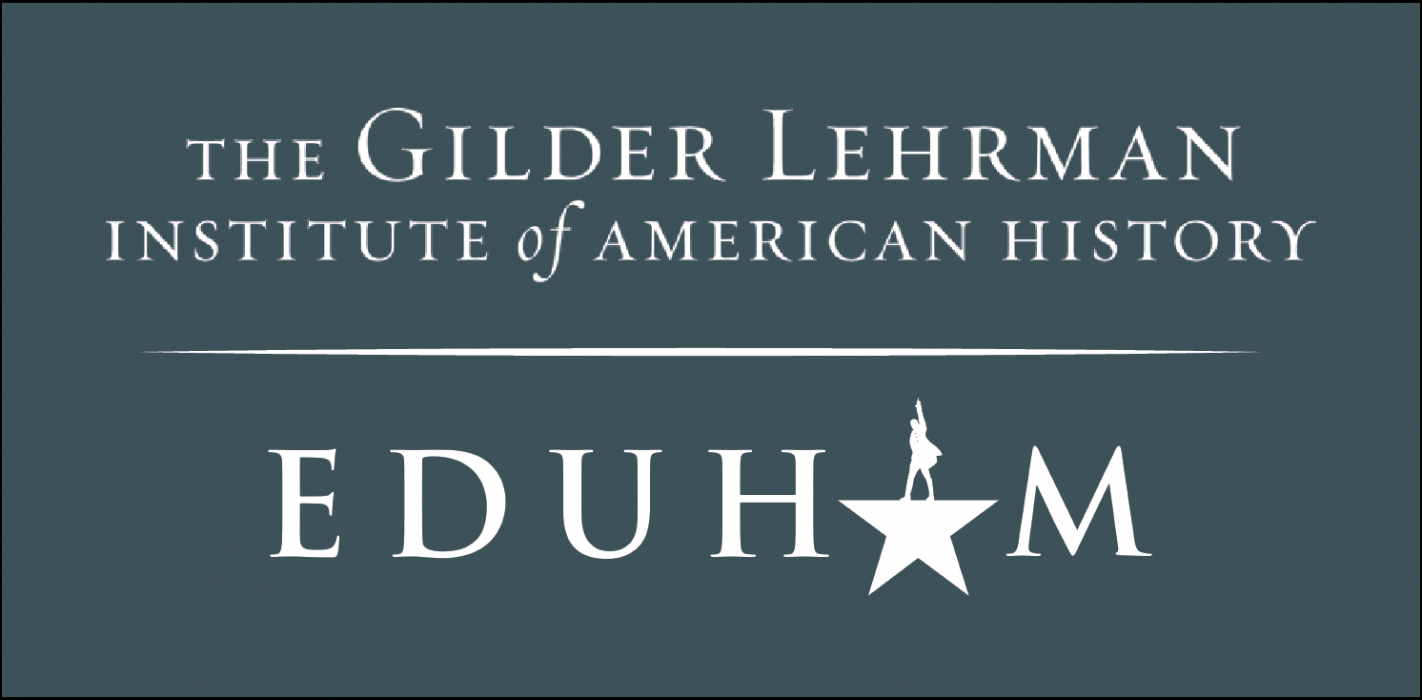We’re your one-stop shop for teaching the First Amendment. Everything you need is here in Lessons in Liberty, from court cases to lesson plans. Our goal is to make your job easier. That’s why we’re here.
Why teach the First Amendment?
Help tomorrow’s citizens find their voices. Teach the First Amendment. The lesson plans, school activities and other resources below are designed to make it easier to teach our democratic republic's first freedom — the First Amendment.
The most basic liberties guaranteed to Americans — embodied in the 45 words of the First Amendment to the U.S. Constitution — assure Americans a government that is responsible to its citizens and responsive to their wishes. These 45 words are as alive and important today as they were more than 200 years ago. These liberties are neither liberal nor conservative, Democratic nor Republican — they are the basis for our representative democratic form of government.
We know from studies beginning in 1997 by the nonpartisan First Amendment Center, and from studies commissioned by the Knight Foundation and others, that few adult Americans or high school students can name the individual five freedoms that make up the First Amendment.
The First Amendment isn’t an artifact of legal history buried in the past. It is a living part of the everyday lives of every one of us. Especially in education, First Amendment issues offer almost limitless applications and opportunities.
Teachable aspects of the First Amendment include:
- How our core freedoms of speech, press, religion, assembly and petition came to be guaranteed is a fascinating saga of American history – involving towering figures, particularly James Madison and Thomas Jefferson. It is a saga that began even before U.S. history and continues to evolve today.
- Students should know that the Bill of Rights, including the First Amendment, did not spring whole into existence with no debate by our Founding Fathers. Rather, it arose through great contention and controversy, illustrating the early — and continuing — workings of U.S. government and our legal system.
- We have the freedom to speak, write, worship, assemble, and ask the government for change, but how do we as citizens use those freedoms? What does it mean to exercise freedom responsibly? The First Amendment offers teachers a way into matters of civility and respect for others in society.
- Current affairs. Examples of the First Amendment in action and in the news are inexhaustible. They can form the basis for class debates. From student protests, to issues of religious freedom in schools and in society at large, to press censorship and freedom of information, teachable First Amendment moments are everywhere.
Below, the Free Speech Center has gathered a host of resources and ideas to help teachers teach the First Amendment. They're organized by categories representing the five freedoms of speech, press, religious liberty, assembly, and petition. There's also a general category for resources on the Bill of Rights and related material.
As more resource materials become available, they will be added.
The primers, lesson plans and resources below will draw young people into an exploration of how their freedoms began and how they operate in today’s world. Students will discuss just how far individual rights extend, examining rights in the school environment and public places. The primers and lessons may be used in history and government, civics, language arts and journalism, art, and debate classes. They may be used in sections or in their entirety. Many of these materials indicate an overall goal, offer suggestions on how to teach the lesson and list additional resources and enrichment activities.
“Congress shall make no law respecting an establishment of religion, or prohibiting the free exercise thereof; or abridging the freedom of speech, or of the press; or the right of the people peaceably to assemble, and to petition the Government for a redress of grievances.” – The First Amendment to the U.S. Constitution
-
-
-
-
-
Freedom to Petition the Government
-
Beyond use in digital or in-person orientation, this lesson can be used for onboarding teaching assistants to give them an overview of their rights in the classroom. The framework for a faculty-led panel on academic freedom can also be used as a Constitution Day activity on campus. From the Foundation for Individual Rights in Education.
This lesson is about the 1986 Supreme Court case Bethel School District v. Fraser, which established a school’s ability to prohibit inappropriate student language on campus. From iCivics.
This lesson centers on Frederick Douglass’ acclaimed defense of free expression, “A plea for free speech in Boston.” The material, oriented toward Black History Month, "is also appropriate for lessons on the First Amendment, minority rights, the perils of censorship, and the power of the spoken word."
This Media Ethics Initiative case study tackles the question of whether it’s protected by the First Amendment to encourage another person to commit suicide.
Beyond use during digital or in-person orientations, this lesson can be a tool to teach student-government members and student-organization leaders about how the university can and cannot respond to controversial speakers. From the Foundation for Individual Rights in Education.
This guide will help educators teach students about the First Amendment and whether or not it protects Alex Jones from libel suits against him from the families of Sandy Hook victims after he claimed the killings of schoolchildren was a hoax. From First Amendment Watch.
Students will learn about Citizens United v. Federal Election Commission, a 2010 Supreme Court ruling about limiting government restrictions on campaign contributions. From iCivics.org.
This special lesson geared to the annual Constitution Day helps teachers present the rationale, history and importance of the First Amendment freedom of speech. Includes a PowerPoint slide deck, summarized readings, and critical-thinking questions.
In a pandemic, how can scientific inquiry, including disagreements, be openly discussed, without opposing viewpoints being labeled as "misinformation"? This lesson explores the value of freedom of speech in a time of uncertainty and fear.
On campuses across the country, speech and due-process rights have been challenged as administrators struggle to respond to the Covid-19 pandemic. See how these trends have affected vital student and faculty rights in higher education. From the Foundation for Individual Rights in Education.
This lesson "explores some of the current controversies around free speech in education through various activities, videos, DBQs, and discussion-focused questions. Students will learn about some of the most popular arguments against free speech and how to respond to them, as well as why it can be important to voice your opinion, even if it’s an unpopular one."
"Students who wish to be effective, persuasive communicators must develop argumentation skills. This unit includes sample debate topics, instruction on how to form a powerful argument, and activities designed to help students build comfort with taking, defending, and challenging competing positions on controversial topics."
When professional football player Rashard Mendenhall tweeted about celebrations surrounding the assassination of Osama Bin Laden, he gained the ire of many Americans. This case study explores the story of Mendenhall’s tweets and the freedom of speech. From the Media Ethics Initiative.
This iCivics lesson, formatted as a game quest, will teach students about their First Amendment rights as they protect their “law clients.”
Social media platforms are private companies, which means they can censor material posted on them according to their own rules and regulations. This primer shows major social media platforms’ policies on hate speech, obscenity, misinformation and harassment. A primer from the Freedom Forum.
This lesson teaches elementary schoolers about the First Amendment, focusing on Tinker v. Des Moines Independent Community School District (1969). From the First Amendment Museum.
This exercise from the Freedom Forum asks: Do schools have the right to punish students for online speech when they are off campus?
This lesson plan can be used with any of the case studies in the Freedom Forum’s Free Speech Essentials collection.
"Drawing from the life and journey of NBA star Enes Kanter Freedom, this mini-lesson highlights the unique protections of the First Amendment in the United States in comparison with restrictions abroad."
Free Speech on College Campuses
This lesson provides key concepts, materials and readings on Free Speech on campus for both private and public colleges. From the Free Speech Center.
The Media Ethics Initiative provides various articles on topics related to the First Amendment, complete with discussion questions.
This lesson, provided by The New York Times, teaches students about how the First Amendment applies online, especially to bloggers.
Provided by Read Write Think, this instructional plan helps students to think about the meaning behind the Pledge of Allegiance and how they use their freedom of speech.
The United States Capitol Historical Society provides this lesson plan on the history of the First Amendment and freedom of speech.
This Media Ethics Initiative case study discusses the ethics of Twitch’s hate-speech policies.
This lesson looks at how people cope socially and emotionally with unwelcome but protected speech, and covers ways that students can develop skills of resilience, refutation, and self-advocacy. Bonus section: Teaching Healthy Discourse.
This First Amendment Watch teacher guide discusses NFL “take a knee” protests and their relation to the First Amendment.
California Courts presents this lesson on the First Amendment, focusing specifically on the freedom of speech and what types of speech are considered protected.
This interactive guide helps determine whether certain speech is protected by the First Amendment with four simple questions. A primer from the Freedom Forum.
Students will use this lesson to learn about video games and why the First Amendment keeps the government from restricting access to them. From the Student Press Law Center.
This video can serve as a resource on campus web pages explaining student-speech rights, teaching incoming students about when speech crosses the line and loses First Amendment protection. This module focuses primarily on defining and providing examples of freedom of speech limitations, such as harassment, true threats, intimidation, and other unlawful conduct. From the Foundation for Individual Rights in Education.
Students will examine a case about band-themed T-shirts in high school and use evidence to build arguments about whether or not the T-shirts are disruptive. From iCivics.org.
This lesson will have students examine the works of Norman Rockwell and analyze the First Amendment. From Lesson Planet.
The video adaptation of this lesson and the script can be used in digital or in-person program orientations to teach students tactics for responding to offensive speech and when offensive speech loses First Amendment protection. From the Foundation for Individual Rights in Education.
Targeted for 8th-grade students, this lesson focuses on propaganda and censorship during World War I. From the First Amendment Museum.
This Media Ethics Initiative case study discusses the trend of coaches’ banning their athletes from social media and whether or not this practice is ethical.
This lesson in programming explains IT policies or codes of conduct. The video can also be placed on university web pages explaining student rights or IT policies. From the Foundation for Individual Rights in Education.
Video lesson on "legal considerations and competing interests involved in social media censorship of 'misinformation' about the coronavirus, and steps tech companies are taking to elevate information from authoritative sources."
The First Amendment Center and the John S. and James L. Knight Foundation present this guide on social media and the First Amendment for middle and high school teachers, including lesson plans, resources and more.
"Free-speech rights have proven themselves essential in securing a fair hearing for demands for justice and equal Constitutional protection for marginalized groups and isolated, targeted individuals throughout U.S. history. This module examines the crucial role of free speech in the Abolitionist, Women’s Suffrage, and Civil Rights movements."
This annual report condenses the considerable research in FIRE’s Spotlight database into an accessible picture of the state of free expression on our nation’s campuses. The report surveys speech codes at America’s largest and most prestigious colleges and universities, providing readers with key data on individual schools and national trends.
Students will learn about the restrictions of the First Amendment in this iCivics lesson, from Supreme Court rulings to speech codes on college campuses.
This case study examines anti-vax memes on Facebook and other social media platforms and whether or not the best solution is to ban them. From the Media Ethics Initiative.
Education World offers this lesson plan on how freedom of speech and freedom of religion affect what students can wear at school.
A lesson plan from the Bill of Rights Institute delving into students’ free-speech rights on school grounds.
Study-abroad programs have experienced extensive changes recently due to COVID-19, but while the logistics of travel are different and may remain changed in coming years, the underlying freedom of expression issues remain constant. From the Foundation for Individual Rights in Education.
Beyond use in digital or in-person orientations, this video adaptation can be placed on university web pages explaining student rights, or on diversity and inclusion pages, to give a fuller picture of how to embrace difficult conversations. From the Foundation for Individual Rights in Education.
An important way to develop student respect for freedom of speech is to teach them how to have "meaningful conversations with their peers."
Students will use this iCivics lesson to learn about Texas v. Johnson, the 1989 case in which the Supreme Court ruled that burning the American flag is protected by the First Amendment.
Two lessons examining why free speech is vital for self-government and how freedom of speech has been both limited and expanded. From the Bill of Rights Institute.
What do you do when you see something absurd. Do you speak up? Working from Hans Christian Andersen’s fable “The Emperor’s New Clothes,” "this lesson examines the importance of thinking for oneself, even if everyone else disagrees."
Students will use this lesson to explore free expression under the First Amendment and the Constitution. From Lesson Planet.
Students will discuss examples of speech and whether or not they’re protected under the First Amendment, as well as apply the First Amendment to their own lives. From Lesson Planet.
This lesson "explores the landmark cases and legal reasoning behind the strong speech protections that Americans uniquely enjoy, while correcting some common misconceptions."
This research documents the ways and reasons that scholars have faced calls for sanction; how scholars and institutional administrators have responded to different forms of targeting; and what (if any) sanctions scholars have ultimately faced. From the Foundation for Individual Rights in Education.
From the Foundation for Individual Rights in Education, this video can serve as a resource on university web pages explaining student-speech rights.
This video from the Bill of Rights Institute’s Homework Help series analyzes how a student protest against the Vietnam War went all the way to the Supreme Court.
This iCivics lesson teaches students about the Supreme Court decision that extended First Amendment free-speech rights to students at school, Tinker v. Des Moines.
Students will learn about West Virginia State Board of Education v. Barnette, the 1943 Supreme Court case that determined that it was unconstitutional for schools to force students to salute the flag and recite the Pledge of Allegiance. From iCivics.org.
High school students will explore the liberties and limits of speech and expression in schools in this First Amendment Museum lesson.
UNIVERSITY OF GEORGIA SCHOOL OF LAW
This primer covers which government employees are not allowed to speak to the news media and the First Amendment implications of these restrictions. From the University of Georgia School of Law.
Using laws and writings that influenced the development of the First Amendment, students “vote off” proposed amendments from the time period. From the Freedom Forum.
Students use their First Amendment knowledge to weigh in on a current First Amendment issue or controversy via multimedia response pieces in this Freedom Forum lesson plan.
Students in this Freedom Forum exercise engage in a simulated high-stakes debate over a national security situation that highlights the causes and effects of tensions between journalists and government officials.
This video from the Freedom Forum explores the interplay between a free press and the civil rights movement’s fight for equality.
The Freedom Forum presents a crash course on everything you need to know about libel law.
UNIVERSITY OF GEORGIA SCHOOL OF LAW
This resource provides access to an information sheet for what a journalist should do while reporting on a protest. From the University of Georgia School of Law.
A major influential champion of freedom of the press during the founding and formation of the United States was Benjamin Franklin. "This lesson takes a look at two of Franklin’s works— Silence Dogood No. 8 and “On the Freedom of the Press”—in order to gain insight into his thinking" about both press freedom and freedom of speech.
Teachers can use this First Amendment Watch guide to teach about the impact on the First Amendment when public officials block critics on social media.
Students will examine the First Amendment and the right to privacy in this Lesson Planet activity.
In this case study, readers will examine the ethics of doxing – publishing someone’s private identifying information – in relation to digital journalism, focusing on HuffPost’s covering of Amy Mekelburg and her far-right Twitter account. From the Media Ethics Initiative.
Presented by Newspaper Association of America Foundation, this guide is full of activities to teach elementary, middle and high school students about the First Amendment.
This Freedom Forum lesson plan helps young students understand what it means to have the freedom to express ideas through books and drawings.
Freedom of the press is much simpler in theory than in practice. In this Freedom Forum activity, students use the E.S.C.A.P.E. strategy to closely analyze a historical source, shedding light on how freedom of the press has ignited controversy and drawing comparisons to today’s debates over the role of the news media.
This Student Press Law Center presentation teaches about freedom of information laws and their importance in journalism. It’s available as a PDF, with and without notes, and as a prerecorded video.
A video overview from the Bill of Rights Institute, including landmark press-freedom Supreme Court cases.
This overview of press freedoms explains why government accountability is critical to a functioning democracy. From the News Leaders Association.
Explores the importance of a free press and "why newspaper theft—an unfortunate incident that sometimes takes place on American college campuses—is wrong.
Video discussion examining this Supreme Court case in exploring how free-press protections apply to student journalism. From the Bill of Rights Institute.
This iCivics lesson teaches students about the Supreme Court decision that established a school principal’s right to censor students’ school newspaper, Hazelwood School District v. Kuhlmeier.
SchoolJournalism.org offers a variety of resources on the First Amendment, journalism and news literacy for teachers and students.
Students can use this Student Press Law Center primer to learn about their own First Amendment rights at school and how they’re limited.
This primer tells students what they need to know about freedom of information at both public and private colleges. From the Student Press Law Center.
Students will learn about the First Amendment’s relationship to photojournalism and the ethics involved in it. From Lesson Planet.
What is a leak? Is leaking illegal? Are journalists protected for publishing classified information? This interactive guide from the Freedom Forum answers a variety of questions about leaks and whistleblowing.
This Student Press Law Center lesson plan, based around World Press Freedom Day, teaches about the important of the First Amendment and freedom of the press.
NATIONAL COALITION AGAINST CENSORSHIP
NCAC provides many books about censorship at school and how to fight it for students.
NATIONAL COALITION AGAINST CENSORSHIP
NCAC provides many books about censorship at school and how to fight it for parents, teachers and school officials.
Bill of Rights Institute lesson plan examining how this landmark 1964 Supreme Court case protected press freedom even when errors are published, as long as there is no “actual malice” in publishing them.
Newsgathering and Privacy
Did you know the First Amendment protects the right of news reporters and citizen journalists to report on matters of public concern? This Free Speech Center lesson further explores news gathering, reporting and privacy and how it is protected.
More and more online news sites are disallowing comments. Is this an unethical decision, or is it just a necessary measure to eliminate irrelevant and uncivil comments? This Media Ethics Initiative case study tackles these questions.
UNIVERSITY OF GEORGIA SCHOOL OF LAW
This resource discusses the First Amendment impacts of public officials blocking users on social media. From the University of Georgia School of Law.
This presentation teaches about the free press rights of student journalists. Available in PDF and video formats. From the Student Press Law Center.
This interactive chart, created by the Knight First Amendment Institute at Columbia University, provides information about prosecution against whistleblowers under the Espionage Act.
UNIVERSITY OF GEORGIA SCHOOL OF LAW
This University of Georgia School of Law primer teaches about prior restraint and what student journalists should do if censored by their school administration.
The Principal’s Guide to Scholastic Journalism presents a breakdown of the First Amendment rights of student journalists. Sponsored by the News Leaders Association.
This lesson plan, provided by PBS’s POV, teaches students about the value of journalism and a free press using clips from the documentary film “Reportero.”
This primer from the Freedom Forum offers a few quick ways to determine whether an article is fake news.
The video adaptation of this lesson and the script can be used during digital or in-person journalism-program orientations or class lectures, or as part of remarks while onboarding new student newspaper staff. From the Foundation for Individual Rights in Education.
Too often, student journalists are expected to act as publicists rather than journalists. And when they stray from the misplaced expectations of administrators — and sometimes even their fellow students — student journalists may face consequences. From the Foundation for Individual Rights in Education.
This unit plan features lessons that use newspaper articles and historical texts to discuss and explore the First Amendment. From Lesson Planet.
Students will discuss the role of books in freedom of the press and speech, as well as the reasons for and effects of censorship. From Lesson Planet.
Use this Freedom Forum activity to explore the state of press freedoms around the world.
This foundational Freedom Forum module examines the three models of religious liberty in public schools: the “sacred public school, “naked public school,” and “civic public school.” It also introduces the 3Rs of religious freedom.
America’s First Freedom is a supplementary unit of study created by Religious Freedom Institute to teach American high schoolers about religious freedom.
Essay discussing Thomas Jefferson’s views on a “wall of separation” between church and state. From the Bill of Rights Institute.
"The first right listed in the First Amendment is the freedom of religion. This unit explores what it means to have freedom from and freedom of religion through discussion of key issues such as the Lemon test and the Establishment and Free Exercise clauses."
This Freedom Forum module serves as a brief historical overview of the relationship between religion and public schools. Participants will also examine how that relationship has changed over time and the impact of these issues on public schools today.
People from all different religions live and thrive in America thanks to the religious liberty protected by the First Amendment. This Freedom Forum First Amendment Center guide posted by the Religious Freedom Center provides lesson plans and resources for educators to use to teach students about religious liberty.
Religion in Public Schools
This lesson presents two diametrically opposed situations involving religion in public secondary schools, toward fostering an understanding of the two clauses of the First Amendment pertaining to religion. From the Free Speech Center.
This Freedom Forum module sets-out guidelines for teaching about religion in public schools. It explores how religion can be naturally incorporated into a curriculum; examines why it is important to address religion in academics; and considers the risks of ignoring or not teaching about religious traditions.
Students do not leave their religious identities behind when they go to school, and the free- exercise clause protects their rights to religious expression and practice. This Freedom Forum module examines the protections, and limitations, of the free-exercise clause for students in public schools.
Lesson plan explaining “how the doctrine of incorporation broadened the application of the First Amendment,” particularly in regard to religious freedom. From the Bill of Rights Institute.
A thorough list of cases, many with lessons associated, from the Bill of Rights Institute.
Resources and lessons including landmark Supreme Court cases on religious liberty, from the Bill of Rights Institute.
Essay from the Bill of Rights Institute reviewing the development of religious liberty in the U.S.
From the Bill of Rights Institute’s Homework Help series, this video looks into “the proper relationship between church and state” from historical and legal perspectives.
The First Amendment’s establishment clause prevents the government from creating any law “respecting an establishment of religion” or that privileges one religion over another. This Freedom Forum module examines the purpose and scope of the clause, what constitutes a violation of the provision, and common issues in public schools where the establishment clause might apply.
Lesson plan from the Bill of Rights Institute teaches how the First Amendment protects religious belief.
GILDER LEHRMAN INSTITUTE OF AMERICAN HISTORY
This lesson from the Gilder Lehrman Institute of American History teaches about the Great Awakening, a series of important religious revivals in Colonial America. These revivals connect to the Colonists’ desire to declare independence and the eventual writing of the First Amendment.
This Lesson Planet exercise explores New England government in the 1700s, discussing the significance of various documents and their connection to freedom of religion in America.
Lesson plan explaining why this religious-freedom clause is important. From the Bill of Rights Institute.
Students analyze a 1992 Supreme Court case about religion in public schools, drawing on their First Amendment knowledge to support their own conclusions about how the court should have ruled. From the Freedom Forum.
These questions and answers give students, parents, teachers, school administrators and lawyers all they need to know about school protests. A primer from the Freedom Forum.
From the Media Ethics Initiative. Readers will learn about free speech and protest on college campus in this case study, focusing on Young Conservatives of Texas’s 2016 protest against University of Texas’s affirmative-action program.
Freedom of Assembly in the 1960s Civil Rights and Antiwar Movements
Lesson plan from the Free Speech Center on how protesters used their freedom of peaceable assembly to push for change.
This video examines a Supreme Court case involving a Nazi march through a mostly Jewish neighborhood in Illinois, placing the case in the context of the First Amendment freedom of peaceable assembly. From Annenberg Classroom.
This Annenberg Classroom lesson will focus on freedom of assembly as established in the First Amendment. Students will consider the importance of the right to assemble and protest by analyzing cases where First Amendment rights were in question.
Why do people protest? Where can people assemble? What limits can the government put on protests? This primer from the Freedom Forum answers these questions and more.
Among the questions explored in this lesson are what constitutes a legally protected protest and what the limits are. The lesson also looks at "controversial forms of protest."
Beyond use during digital or in-person orientations, this lesson can be used in first-year experience seminars so students can participate in discussions about the history presented and its relationship to current events on campus. This lesson can be particularly useful for teaching international students about the history of free speech on American campuses. From the Foundation for Individual Rights in Education.
This teacher guide covers the First Amendment right to assemble peaceably. From First Amendment Watch.
Exploring the meaning of protest, and its boundaries, the lesson focuses on Canadian and then American truck drivers who flooded national capitals to object to COVID restrictions and requirements. "Were they within their rights?" the lesson asks. "Did they go too far?"
A brief video tour of the National Archives’ “Amending America” exhibit serves as a learning tool on the right of petition. Includes a video about lobbying. From C-SPAN Classroom.
This Lesson Planet lesson will help students learn about the right to petition and assembly by writing their own declaration of complaints.
NATIONAL CONSTITUTION CENTER
From the National Constitution Center. Students will look into two of the founding freedoms of the First Amendment and how citizens can use these rights in our democratic republic.
This American Bar Association teaching resource “discusses the constitutional right to petition, and how petitions have been used in American history.” Includes a handout, found at https://www.americanbar.org/content/dam/aba/administrative/public_education/Lawday/2020/Petition_examples_handouts.pdf
Students will use this lesson to learn about the rights to petition and assembly and research some of the groups that have used them. From Lesson Planet.
Petitioning the Government
Lesson plan illustrating how the right to petition the government to correct a wrong or achieve a goal is fundamental to the workings of a democratic republic. From the Free Speech Center.
NATIONAL CONSTITUTION CENTER
Students will learn how to write a petition for change in this activity from the National Constitution Center.
In this First Amendment video overview from C-SPAN Classroom, Sen. Ben Sasse, R-Neb., talks about the meaning of the First Amendment.
In this Lesson Planet exercise, students will analyze Supreme Court cases to learn about the five freedoms of the First Amendment. For grades 4-6.
Actor Martin Sheen narrates this story of the political struggles involved in establishing the First Amendment and early challenges to it. From the Freedom Forum.
This Freedom Forum classroom activity asks students to find examples of people using their First Amendment freedoms.
Using laws and writings that influenced the development of the First Amendment, students “vote off” proposed amendments from the time period in this Freedom Forum exercise.
Similar to the Freedom Forum game, students will learn about the First Amendment by creating their own draft amendments and voting for the most important. From Lesson Planet.
The text of the first 10 amendments to the U.S. Constitution, with discussion, from the Bill of Rights Institute.
This lesson plan, created for 5th-graders, contains a wide variety of activities focusing on the Bill of Rights, from illustrations to a mock trial. From Lesson Planet.
Students in grades 8-10 will use this lesson to learn about the Bill of Rights and the circumstances leading to its writing. From Lesson Planet.
In this Lesson Planet activity, students in grades 9-12 will analyze the Bill of Rights and research the First Amendment and others.
The Bill of Rights Institute offers a variety of guides and lesson plans based on constitutional principles, including the First Amendment.
This Lesson Planet lesson, made for 9th-graders, will help students to understand the First Amendment and its impact on their daily lives.
This FAQ can be handed out to new students. Additionally, the text or video can be used on university web pages explaining student rights. From the Foundation for Individual Rights in Education.
The AMERICAN LIBRARY ASSOCIATION offers a primer on censorship and the First Amendment, as well as links to other relevant resources.
Students will conduct a survey centered around the First Amendment and use it to analyze how aspects of the First Amendment come into play at school. From Lesson Planet.
This annual contest run by Schooljournalism.org challenges students to write a public-service announcement that explains and affirms the importance of the First Amendment.
This lesson, written by Lesson Planet for 5th-graders, will help students to analyze the First Amendment and use it to solve a school-related issue.
NEWHOUSE SCHOOL, SYRACUSE UNIVERSITY
These six short films, produced by the Tully Center for Free Speech at the Newhouse School of Public Communications at Syracuse University, teach about different Supreme Court cases and other topics related to the First Amendment.
The Free Speech Center’s compilation of significant historical events, court cases, and ideas that have shaped First Amendment law as we know it today.
This Annenberg Classroom timeline traces developments in the history of our First Amendment freedoms: religion, speech, press, assembly and petition.
From Lesson Planet: 12th-graders will learn about the First Amendment and its day-to-day importance in their lives with this lesson.
Provided by the California Courts, this lesson plan focuses on the Bill of Rights, specifically the five freedoms of the First Amendment.
Students explore the interplay among the five First Amendment freedoms as they play an elimination game to determine the most important freedom. From the Freedom Forum.
Students will be able to define the five freedoms of the First Amendment and provide examples of how they exercise these freedoms in their lives. From the Freedom Forum.
Students apply their knowledge of the First Amendment to specific scenarios to determine when those freedoms are protected and when they are not. From the Freedom Forum.
Students will examine the Bill of Rights, the Constitution and other resources to create a brochure about a civil rights topic. From Lesson Planet.
From Schooljournalism.org, two days of lessons created by ASNE, now the News Leaders Association, on First Amendment law. Other resources can also be found on this page.
Students will learn about the five freedoms of the First Amendment through this group activity from the First Amendment Museum.
A report summarizing best practices for educators to approach and promote advocacy and engagement around the First Amendment’s five freedoms.
First Amendment hypotheticals for classroom use, developed by the Poynter Institute’s Press Pass program in partnership with the Free Speech Center.
Making the Law Come Alive: Teaching the First Amendment Through Contemporary Conflicts
First Amendment Watch at New York University offers many lesson plans and teacher guides on the First Amendment, each relating to issues America faces today.
Students build on research from “The First Amendment in Action Today” lesson to create, execute and document a plan of action to address a community issue. From the Freedom Forum.
"En este módulo de lección, encontrarás tres presentaciones en español que puedes usar para explicarles a tus estudiantes sobre los elementos filosóficos, históricos, y jurídicos de la Primera Enmienda de la Constitución Estadounidense."
The National Endowment for the Humanities provides hundreds of “EDSITEment” lesson plans, including First Amendment lesson plans such as The First Amendment: What’s Fair in a Free Country?
GILDER LEHRMAN INSTITUTE OF AMERICAN HISTORY
From the Gilder Lehrman Institute of American History, a lesson for grades 10-12 on the Bill of Rights, including the First Amendment.
GILDER LEHRMAN INSTITUTE OF AMERICAN HISTORY
Students in grades 4 through 6 can use this lesson to learn about the Bill of Rights, including the First Amendment. From the Gilder Lehrman Institute of American History.
These resources, created by PBS, teach students about issues America faces today, helping them understand the importance of civics. (This resource is the new version of PBS NewsHour EXTRA. The old content on EXTRA has not been fully converted to Classroom and is currently accessible at https://www.pbs.org/newshour/classroom/.)
From banned books that warn against censorial regimes to international stories about fighting censorship to books chronicling the First Amendment’s role in America’s media landscape, this list has a book or document fit for any academic program. From the Foundation for Individual Rights in Education.
GILDER LEHRMAN INSTITUTE OF AMERICAN HISTORY
This study aid will help students remember which rights are protected by each amendment. From the Gilder Lehrman Institute of American History.
This iCivics lesson, formatted as a web quest, will have students analyze Supreme Court cases that interpreted the First Amendment, as well as explain the role of the Supreme Court in interpreting the Constitution.
As valuable as the Bill of Rights is, most Americans know very little about it. Test your own knowledge — and your students’ — by taking the Free Speech Center's quiz.
In 1776, our founders risked their lives to publish a Declaration of Independence. Those early Americans sought “life, liberty and the pursuit of happiness” by creating a nation founded on freedom. This Free Speech Center quiz tests knowledge of the Declaration of Independence.
This lesson, targeted toward 9th-graders, will teach students about the Bill of Rights, including the First Amendment. From Lesson Planet.
This learning resource from Lesson Planet will help teachers begin educating their students about the Bill of Rights.
In this lesson, 11th-graders will analyze the First Amendment through surveys and evaluation. From Lesson Planet.
This worksheet from Lesson Planet, made for 4th- and 5th-graders, will help students analyze the First Amendment and its importance in their lives.
With this lesson plan, teachers will lead students through a First Amendment-related story, asking questions and prompting debate along the way to help students think more deeply about the five freedoms. From the First Amendment Museum.
This comprehensive Free Speech Center resource boasts “more entries on the First Amendment than any other work of its kind.” With more than 1,500 searchable entries, it can give you information on any First Amendment question you might wish to explore in class.
Students research an individual or group using the First Amendment to solve a community issue, then turn their findings into digital posters. From the Freedom Forum.
This lesson explores the rights of the First Amendment and the responsibilities that come with it. From Lesson Planet.
This course from the Foundation for Individual Rights and Expression "reviews the unique inheritance of basic rights and freedoms bestowed on all American citizens by our founding documents, which draw from Enlightenment conceptions of liberty and individual human dignity. It also covers the essential role of open discourse and reasoning in examining evidence and seeking truth."
This First Amendment Watch guide will help educators teach about the Sedition Act of 1798 https://firstamendment.mtsu.edu/article/sedition-act-of-1798/ and its impact on the First Amendment at the time.
A series of 10 short documentary videos, one for each amendment in the Bill of Rights, showing how each freedom came through controversy to ratification by the Founding Fathers.
The Freedom Forum presents these resources for educating about the First Amendment, including training, lesson plans and more.
Learn how activists in past social movements leveraged the power of First Amendment to bring about change, then dissect persuasive techniques used to shape public opinion and their application to current issues. From the Freedom Forum.
Can you envision life in the United States without the five freedoms of the First Amendment? This exercise from the Free Speech Center will help instill a greater understanding and appreciation for the freedoms the First Amendment guarantees and protects.
"This character-building lesson, designed for Women’s History Month, offers students an empowering glimpse into the many achievements and profound emotional strength of one of America’s most admired First Ladies."
This lesson teaches students about the rights guaranteed to them by the Bill of Rights. From iCivics.org
This primer, presented by Judicial Learning Center, teaches students about the rights protected by the First Amendment, using case studies and other activities.
Classes will use this Lesson Planet lesson to discuss the First Amendment and why students should care about it.
